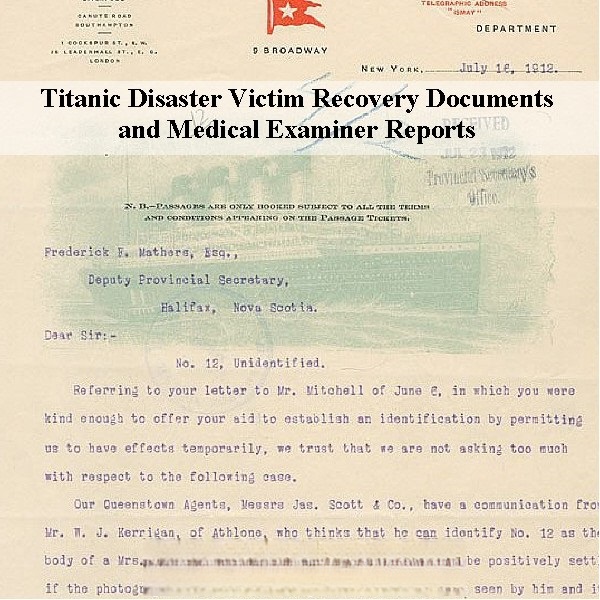
Titanic Disaster Victim Recovery and Medical Examiner Records
$19.50
Description
Titanic Disaster Victim Recovery Documents & Medical Examiner Reports
This collection consists of 1,555 pages detailing the efforts to recover victims of the Titanic disaster from the ocean.
On April 14, 1912, at 11:40 PM, the RMS Titanic was carrying around 2,224 individuals, including both passengers and crew members, when it struck an iceberg approximately 375 miles from the southern coast of Newfoundland. By 2:20 AM on April 15, 1912, as the ship sank, the outcomes for those aboard were sealed, resulting in 705 survivors while over 1,500 lives were lost.
The RMS Carpathia gained fame for rescuing survivors who had managed to escape into lifeboats amidst the chilling waters of the North Atlantic Ocean. However, less widely known are the CS Mackay-Bennett and CS Minia, the vessels responsible for recovering the majority of the bodies found in the sea. Just two days after the Titanic’s tragic sinking, the White Star Line chartered the cable ship Mackay-Bennett, which was stationed in Halifax, Nova Scotia. The company subsequently enlisted additional Canadian ships for the recovery operation, including the lighthouse supply ship Montmagny, the CS Minia, and the sealing vessel Algerine. Each of these vessels was equipped with embalming materials, coffins, funeral directors, and clergy to assist in their solemn mission. Out of a total of 333 bodies recovered from the ocean, 328 were located by Canadian ships, while the remaining bodies were discovered by other vessels navigating through the North Atlantic.
The Mackay-Bennett retrieved a staggering 306 bodies; of these, 116 were given a burial at sea, while 190 were transported back to port for proper identification and handling. Meanwhile, the CS Minia successfully found 17 bodies, with 15 of them returned to Halifax. Additionally, the Canadian Government Ship (CGS) Montmagny recovered four bodies, one of which was also buried at sea. Finally, the SS Algerine managed to recover one body. Among the remains retrieved from the ocean were notable individuals such as John Jacob Astor IV, an American businessman recognized as the wealthiest passenger aboard the Titanic. Also included were Isidor Straus, the proprietor of Macy’s Department Store, and architect Edward Austin Kent. As time passed, the Mackay-Bennett began to deplete its supply of embalming fluids. The vessel could only bring the bodies back to Canadian shores if they had undergone embalming first. Consequently, Captain Frederick H. Larnder of the Mackay-Bennett made the decision to return only the bodies of first-class passengers to land, while the others were respectfully laid to rest in the sea. Those bodies that were brought back to Halifax were taken to a makeshift morgue that had been established in a local curling rink.
Regarding the documentation available,
The Titanic disaster medical examiner fatality reports consist of 1,285 pages compiled by the Medical Examiner for Halifax and Dartmouth, detailing information about the 328 victims from the Titanic who were recovered by vessels operating out of Nova Scotia. These documents highlight the strenuous efforts made to identify the bodies that remained unidentified.
Each report typically includes a comprehensive one-page record from the Medical Examiner for each Titanic victim, which notes their identity when known, gender, physical traits, estimated age, clothing, class of passenger, and any personal belongings found with the deceased. Some reports may also feature supplementary documents, including correspondence with White Star Line and details regarding the return of personal effects to families and the identification of the deceased individuals. Many pages within these reports are marked with handwritten annotations and corrections. The initial individual whose remains were retrieved from the ocean was Walter John Van Billiard, who has thus been assigned the identification number one. He was a young boy of just nine years old and was noted for his light-colored hair. The report provides a detailed description of his clothing, which included a single grey coat, a blue coat, a grey woolen jersey, a white shirt, grey knickers, black stockings, and black boots. In terms of personal belongings discovered on him, there was a purse that held several Danish coins, a ring, and two handkerchiefs that had the letter “A” embroidered on them. His body, along with that of his father, Austin Blyler van Billiard, was sent back to their grandparents in North Pennsylvania for interment. Unfortunately, the remains of his older brother, James William van Billiard, who was ten years old, have never been identified as having been recovered.
DISPOSITION OF BODIES FROM THE TITANIC RECOVERED BY MAY 13, 1912 This document is a comprehensive 23-page report prepared by the Halifax Provincial Secretary’s Office. It provides a detailed account concerning the 328 victims of the Titanic disaster whose bodies were located at sea. The registry is organized in alphabetical order and includes, when known, the names of the individuals, their body identification numbers, notable physical characteristics, articles of clothing, personal items found with the bodies, and information regarding the final resting places of the remains. The report consists of two main parts: one listing identified bodies and their disposition and the other listing unidentified bodies and their eventual handling. It draws upon the information that was available at the time it was compiled.
DIARY OF FREDERICK A. HAMILTON Included are seven pages extracted from the diary of Frederick A. Hamilton, who was a cable engineer while he was on board the CS Mackay Bennett, where he participated in the recovery of bodies following the Titanic tragedy.
DIARY OF CLIFFORD CREASE, MECHANIC ON THE CS MACKAY-BENNETT The journal spans 11 pages and features 7 pages filled with diary entries written by Clifford Crease from April 17 to April 30, 1912. Crease served as an artificer, which is essentially a craftsman-in-training, on the Mackay-Bennett, a ship tasked with laying and repairing telegraph cables. His diary provides a clear and direct narrative of the ship’s mission, which involved recovering the remains of victims from the Titanic Disaster.
The document titled “RECORD OF BODIES AND EFFECTS (PASSENGERS AND CREW SS ‘TITANIC’) RECOVERED BY CABLE STEAMER ‘MACKAY-BENNETT'” encompasses 79 pages. It contains two typed pages supplemented with handwritten notes at the end that list numbers 307 to 330, detailing bodies retrieved by other vessels such as the CS Minia, CGS Montmagny, and SS Algerine. Notably, the report omits details for numbers 324, 325, and 326, although other documents do reference number 326 as an unidentified body.
Furthermore, there are 114 article clippings from the Chronicle Herald of Nova Scotia that chronicle the recovery efforts of Titanic victims. These articles provide a timeline of events and highlight the significant responsibility that Nova Scotia undertook as the guardian for those who perished in the Titanic Disaster. The coverage includes the operations conducted by the Mackay-Bennett and other ships in retrieving bodies from the sea, the return of the deceased to shore, and the ceremonies surrounding their burials, both at sea and on land. Additionally, they feature personal accounts from family members of those lost on the Titanic who arrived in Halifax, sharing their experiences during this tragic time.
Related products
-
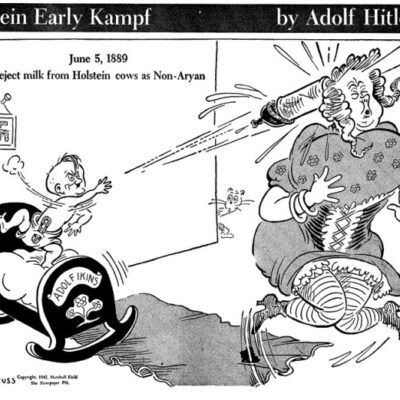

Dr. Seuss – Theodor Geisel World War II Political Cartoons
$19.50 Add to Cart -
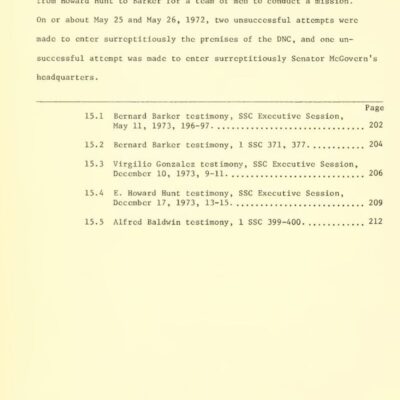
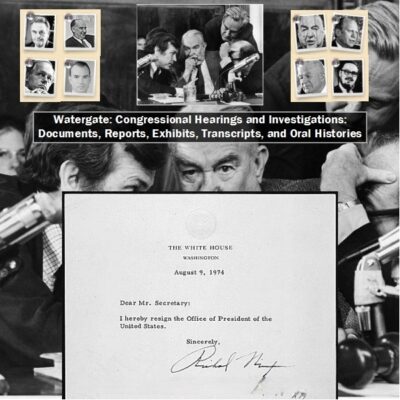
Watergate: Congressional hearings, reports, exhibits, and transcripts
$19.50 Add to Cart -
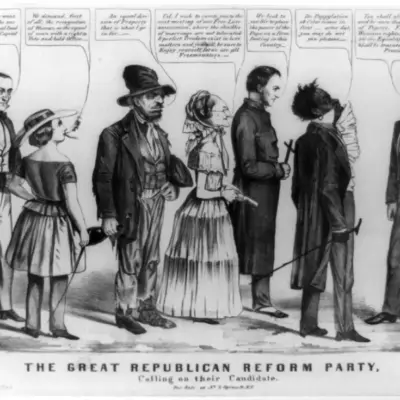

Slavery Political Cartoons: Cartoon Slavery 1789 – 1880
$19.50 Add to Cart -
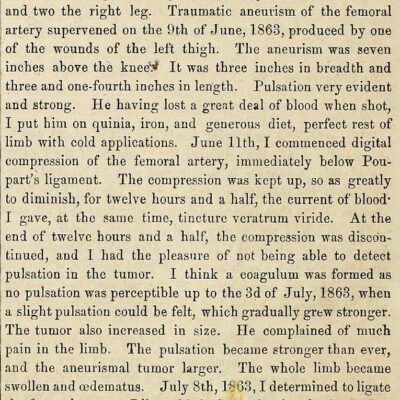
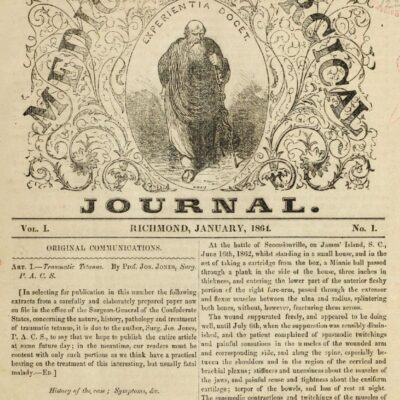
Civil War Confederate States Medical and Surgical Journal (1864 – 1865)
$19.50 Add to Cart